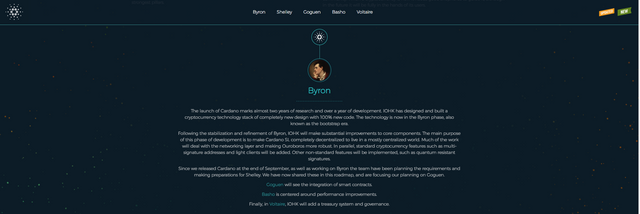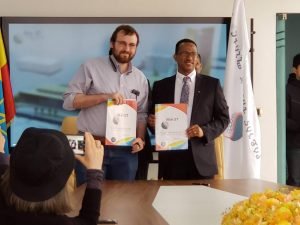Cardano (ADA) Fundamental Analysis: Why we are bullish. We dive deep into ADA's philosophy, tech, use cases, and more.
“There has been a desire to preserve a single notion of consensus around facts and events recorded in a single ledger, regardless of whether it makes sense.” — Cardano Team

Gerolamo Cardano
Bitcoin is blockchain 1.0 because it was the first distributed ledger. Ethereum is blockchain 2.0 because it was the first platform for developers to create decentralized applications. Since the introduction of both the Bitcoin and Ethereum protocols, a few problems emerged. Two gaping issues include the scalability of transactions for Bitcoin, and the bugs stemming from Solidity as the standard coding language in the Ethereum network. Named after influential Italian Renaissance polymath, Gerolamo Cardano, Cardano (or ADA) is a blockchain protocol currently being developed by IOHK (Input Output Hong Kong). Cardano aims to address these issues (among many others) and create a platform to execute smart contracts and to develop and run decentralized applications more efficiently (in addition to launching side chains, multi-party computation and metadata.)
The protocol itself launched on September 29th, 2017, after two years of rigorous research and development by a robust community of academics comprising of the world’s leading scientists, cryptographers, and researchers. The aspect of Cardano’s peer-reviewed development process differentiates itself heavily from other blockchains.

The protocol is still under the ‘Byron’ bootstrap phase. Phase II is called ‘Shelley,’ and is slated to launch halfway through 2018.
As it stands with other blockchain protocols with similar goals, Cardano is ranked 7th on CoinMarketCap (with a $6.46 billion market cap), NEO at 11th (with a $3.99 billion market cap), EOS at 5th with a $10.58 billion market cap) as of May 16th.
What is the Philosophy Behind Cardano?
The motto of Cardano is “process over people.” The typical process in approving a feature to be included within the protocol is handled by huge collectives of people following rigid guidelines and processes. As mentioned previously, peer review is a fundamental characteristic of the Cardano network.
For example, say a developer has an idea on implementing fees within the protocol. A paper is written on that particular feature, and multiple cryptographic experts, developers, and scientists review it to find holes in the programming language’s logic to make sure it has a robust structure. Experts are critiquing experts. Many argue that this philosophy is a valid method of developing cutting-edge technology.
An ambitious undertaking with government
In a nascent stage, the crypto currency landscape is fairly unregulated by governments all over the world. Another differentiator is Cardano’s ambitious goal of complying with regulations from jurisdictions all over the world. Without much precedent or past legislation relevant to blockchain, the willingness to go through formal government regulations is quite the undertaking. Cardano (like NEO) looks to seriously engage with real-world regulation. One argument is that to effectively interact with legacy systems (like governments and banks), there needs to be a fair degree of integration and some communication system in place between the blockchain world and legacy world to provide value to society.
The technicals of Cardano

Haskell
Haskell is the standard programming language of Cardano. The language is praised by some in the blockchain community as concise in its logic. Less likely to produce errors, Haskell also changes the way some programmers think and work. By forcing programmers to be more concise in their logic, features can be reused. Afterwards, formal methods are used to to check their protocol. Basically, there are rigorous executable mathematical models that determine potential network faults. This ensures a greater level of certainty to predict the level of computing within the network.
Ouroboros: A Provably Secure Proof-of-Stake Blockchain Protocol

The Ouroboros proof-of-stake protocol is the backbone of the Cardano blockchain. Ouroboros: A Provably Secure Proof-of-Stake Blockchain Protocol, was a peer-reviewed whitepaper with consideration to the long-term wastefulness of energy when it comes to proof of work algorithms.
According to Ibtimes, Ouroboros ensures randomness when it comes to electing slot leaders, so long as they have a stake (>0 ADA) in the Cardano network. Ouroboros uses multiparty computation to achieve randomness, with results being shared from elector to elector after an independent coin toss. The importance of randomness makes it so that there will not be a single point of failure- if slot leaders were predetermined, it would leave the protocol vulnerable to hackers.
The Three Main Goals of Cardano
1. Interoperability
There are over two thousand cryptocurrencies available for exchange right now. Exchanging Bitcoin to Ether cannot be executed without an intermediary…. yet. Cardano aims to make a blockchain that can communicate with other blockchains. In addition, there can be metadata attached to each transaction, but it should be rightfully up to the user on whether or not that data will be publicly made available.
“Cardano does not try to be the Columbus of cryptocurrencies. It tries to be the ocean that will take Columbus to the land”- CryptoBasic
Cardano also operates off the notion that there will not be a token to rule them all. Ethereum, Bitcoin, Swift and ACH protocols (used by institutional banking networks), and Ripple all have their own languages. The problem is that if there is a canonical way of communicating with all these different systems, value is fragmented. The kingmaker will be the small on-and-offboarding hubs of transferring value between systems. As of now, exchanges are the sole medium of interoperability between tokens but they are very fragile instruments, subject to draconian regulatory policies, according to Hoskinson.
Sidechains have been around since 2012, but the basic concept is that there is some way of structuring information from one chain to another such that when a transaction is set, the compressed form of information can indicate whether or not it is a legitimate transaction. While sidechains do solve the issue of blockchains being able to understand each other in a specialized way, there lies the issue of the blockchain world being able to communicate with the traditional finance establishment.
Hoskinson identifies the three main issues (within interoperability) as metadata, attribution, and compliance. Metadata is the context of the transaction, and is not well provisioned within the crypto space. The metadata in traditional finance, however, is extremely valuable. Metadata is incredibly personal and private, and struggles to find its place on the blockchain. Everything on the blockchain is immutable, and very sensitive information made public is not desirable by all users. Attribution is about the identify of the actors involved in each transaction (an aspect of metadata, but perhaps the most important one). Compliance is a yet-to-be-determined aspect of the blockchain space that will unfold with time.
2. Scalability
Transactions carry data—with more data, requires more bandwidth. If it goes to millions and billions of users, it might require mega or gigabytes worth of data. Ouroboros is the consensus mechanism to solve this. It breaks the world into epochs. It takes a look at the distribution of tokens, and at a random source of numbers, elect slot leaders. Slot leaders effectively do the same thing as what Bitcoin miners would do. A big difference is that they don’t require the massive computational power needed by Bitcoin miners. It is therefore much more cost effective.
Slot leaders can mine and maintain other blocks on other chains. Cardano divides the time into epochs (split into slots). The network elects slot leaders for each slot. Slot leaders verify transactions, and put them into blocks. If the slot leader fails to show up to execute, he loses the right to produce a block. Then he needs to wait to be reelected to the network. This is highly scalable because there can be multiple epochs running at the same time. Blockchains are stored in a P2P network, where each node receives a copy of the ledger (and new transactions). If there were thousands of transactions per second, the nodes would need a lot of bandwidth to continuously download them all. Cardano wants to divide the network into subnetworks. It uses RINA (Recursive InterNetwork Architecture) to solve this. RINA structures networks with policies and clever engineering principles. The goal is to grant users scalability, privacy, transparency guarantees that are enjoyed by the TC/IP protocol. It is a mechanism that will be set in place as Cardano scales from hundreds to thousands to tens of thousands transactions per second while communicating with the TCP/IP protocol.
2b. Data Scale
Blockchains store things forever (hopefully). But the team behind Cardano recognizes that not all nodes must have a complete copy of all blockchains at all times to maintain the integrity of the protocol. With more TPS, there needs to be more data. Blockchains and their block size can potentially will grow from megabytes to exabytes in the long-term. In a replicated system whose security models rely on each node to maintain the blockchain, it’s not feasible for hardware devices.
Subscriptions (or partitioning, where a user doesn’t have a full copy of the blockchain, have a chunk of the blockchain. There’s a notion that all chunks can be put together if possible.) With partitioning, similar to Bittorent, many more resources can be accessed at a more efficient cost.
Another solution to address data scaling is compression/sidechains. A sidechain is the notion of creating a compressed representation of a blockchain, and creating interoperability and translating transactions across difference blockchains. The Cardano protocol will contain a high level of assurance involving all the transactions that will be going through the network.
3. Sustainable development
There’s the issue of funds potentially running out for teams of developers behind a particular blockchain protocol. The Cardano Treasury is a solution to that problem. The Treasury will receive a small amount of all transactions. It’s a sort of a smart contract that can release funds to developers. Developers can submit ideas to the network, to be approved by the community. The treasury, upon collective votes, can decide which developer gets money. The Treasury is the way in which continuous improvements can be made to the network. the consensus algorithm incurs a transaction fee, that is determined by a particular equation: a + b*c
a is a constant = .155381 ADA, b is also a constant = .000043946, c = size of the transaction in bytes
Cardano Corporate Structure
The overarching corporate structure of the Cardano blockchain comprises of three entities. The Cardano Foundation, based in Switzerland, is the non-profit entity that oversees regulatory compliance, community management, and partnerships for the Cardano blockchain. Input Output Hong Kong (IOHK) is the research, development, and engineering entity, (founded by Hoskinson), behind the Cardano blockchain. Emurgo is the for-profit, venture capital firm behind the Cardano blockchain that aims to establish practical and commercial startups that will be built on top of the Cardano blockchain.
The Team
Charles Hoskinson — Founder and CEO
Hoskinson has held a number of positions within the public and private sector, according to IOHK’s website. He is perhaps best known as one of the cofounders of Ethereum (with Vitalik Buterin), and former CEO of Ethereum. In 2015 he partnered up with the Cardano Foundation and founded IOHK as a contract team to develop the Cardano protocol up until 2020. He has assembled a team of distinguished academics and doctorates, scientists, business, technical specialists, and software engineers from all over the world to develop a truly scientific approach rooted in philosophical fundamentals inherent to the blockchain community.
Jeremy Wood — Co-founder and Chief Strategy Officer
Jeremy Wood also worked with Ethereum in 2013, managing operations. After leaving Ethereum, Jeremy worked as a consultant before starting Input Output with Charles Hoskinson in 2015.
What are some example use cases of Cardano so far?

Japanese-owned, but South Korean-adopted mobile payments platform Metaps Plus most recently announced a partnership with Cardano. Metaps Plus verifies about 10 million mobile to offline transactions per year, according to cryptoninjas.net. The adoption will occur around Q3 2018 and will be used in over 33,000 offline stores and promotions; the adoption signifies cryptocurrency integration with mainstream service providers.

Charles Hoskinson after signing an MOU with the Ethiopian Ministry of Science & Technology. Courtesy of TheNextWeb
According to CCN, Hoskinson most recently signed a memorandum of understanding (on behalf of Cardano), with the Ethiopian Ministry of Science and Technology for developments in agriculture technology. Ethiopia is known historically as the birthplace of coffee (dating back to the 10th century); the partnership between Cardano and the Ethiopian Ministry of Science will help coffee growers prove the the source and purity of their coffee beans. Additionally, a study will be conducted to evaluate how tracking coffee throughout the supply chain can affects its growing, harvesting, roasting, and wholesale life cycle. The project also aims to cut down on fraud and to make land registry more transparent (similar to efforts made by the Kenyan to verify land registries through distributed ledger technology).
ICO & Tokenomics
The protocol generated about $62 million via token crowd-sale between September 2015 and January 2017 with heavy KYC-requirements. It was marketed heavily towards the Japanese, and reports indicate that about 95% of those who participated in the ICO were of Japanese descent (according to CryptoCandor).
Cardano: circulating supply is 25 billion tokens, and there is a maximum supply of 45 billion. As of May 16th, 2:42 EST, Cardano is trading at $0.25 on CoinMarketCap.
DISCLAIMER: We are in no way associated with the Cardano team. Neither is this meant to be financial advice. Whatever follows just reflects our understanding of the project, and our personal opinion on its outlook. Here are links to the Cardano project, and the fundamental principles behind the project.
Originally posted at: Lunar Digital Assets


